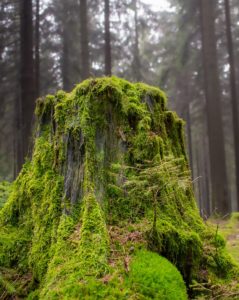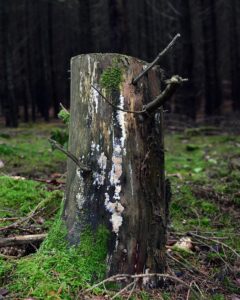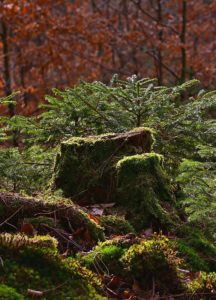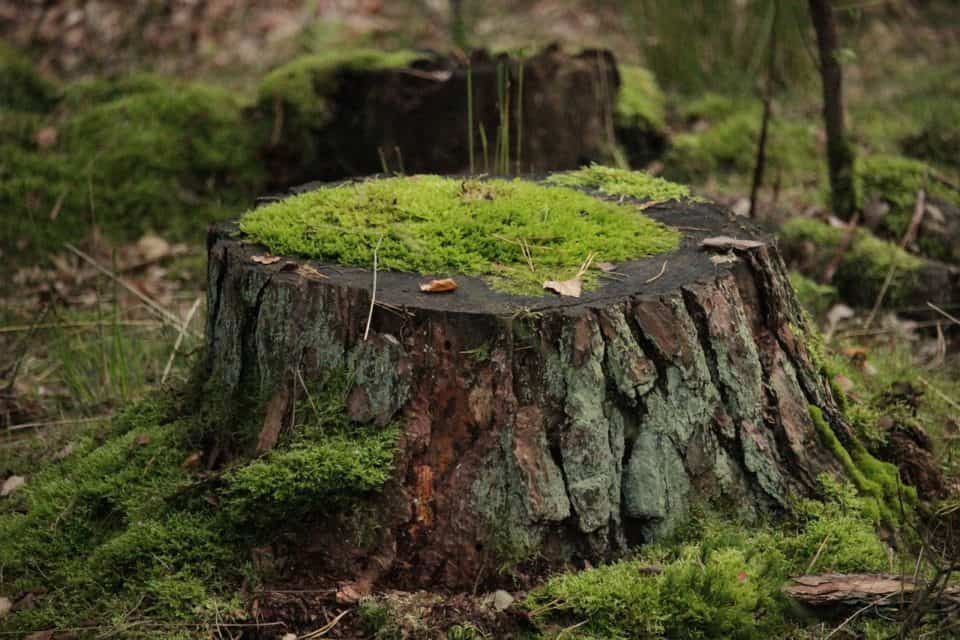Some links in the post are affiliate links and I get a commission from purchases made through some links found in the post.
Maybe you’ve had to cut down a tree because it posed safety issues, was shading the yard too much, no longer served an aesthetic purpose, etc.
Whatever the reason was, we can all agree that cutting down a tree is not an easy task. The cleanup is not easy either.
When you hire a professional tree removal company, you get to go through many questions before completing the job.
Before they leave, they ask questions like, ‘Do you want us to grind out the stump?’ If you answered yes to this question or are planning to do so, here is what you need to know about planting after stump grinding.
How Long Do I Have to Wait Before Planting After Stump Grinding?
 To answer this critical question of planting after stump grinding, we must first consider the facts. Stump grinding is not like stump removal. In the latter case, you get rid of everything over and under the surface.
To answer this critical question of planting after stump grinding, we must first consider the facts. Stump grinding is not like stump removal. In the latter case, you get rid of everything over and under the surface.
You pull out the stump after you have cut down the tree. Stump grinding is different in that the stump grinder chews at the stump wood that remains once you cut down a tree.
The rotating blades cut the wood into chips way below the ground level. So, you end up with a hole which you can fill with the chips, native soil, or potting soil.
Now, to your important question- the issue of patience. The good thing is that stump grinding ensures that there will be no re-sprouts in the future.
That’s unlike the case where you leave the stump untouched. So, you can rest assured that any new crop will not face competition from these pesky sprouts.
But does that mean you should jump into planting a new crop? Hardly!
Even after grinding the stump, the tree will still have roots in the soil. These will take time to decompose, and depending on how developed the root system was; we could be talking months at this point.
So, if you would like to plant a new tree in the same spot, we advise that you wait at least a year.
What happens if you plant a tree in the same spot before a year passes? You might be thinking that the site looks great and could sustain another tree.
After all, all you need to do is import potting or native soil into the hole, and you will be good to go. But that’s not it.
Keep in mind that the ecology of the tree’s former site will undergo tons of changes even after the tree no longer stands in that spot.
As the roots decompose, the microorganisms will be busy at it, trying to break down every inch of the roots. So, planting a new tree will only mean introducing a plant to competition.
It will barely have enough resources and nutrients, which will affect the tree’s chances of survival.
But what if you want to plant another crop (not tree) or grass at the removal site? Keep reading for tips on this.
You may also like: How to landscape with sleepers
How Do You Plant Grass After Stump Grinding?
Here is one thing your professional tree removal company may not tell you- stump grinding changes the soil.
Unfortunately, these changes do not lean on a positive side. Instead, the chippings left behind rob the soil of nitrogen, making it hard to grow healthy grass in or around that region.
While sawdust and wood chippings are natural, they take a long time to decompose on their own. That means it may be years before you can finally grow a healthy lawn.
Even if you plant grass in such a spot, it will not grow well and will appear stunted with visible yellowing. Moreover, it will not spread fast enough, giving weeds a chance to invade your yard, further weakening the grass.
But does this mean you should give up? Not even close. We have a few tips you can use to speed up the decomposition and grow your grass.
Get Rid of The Wood Chippings
Once the grinding is over, you will have a lot of sawdust and wood chippings.
These chippings only reduce the nitrogen content in the soil, so if you want to reverse this effect, you must remove them.
Dig out the chippings and sweep away those that are on the surface.
It’s almost impossible to get rid of all the sawdust. However, you should try and get most of it out of the hole. That way, you will only have a little leftover, and this can improve the soil.
Next, you must account for the void left in the ground. We recommend that you fill this with topsoil- this has a high level of nutrients and the right microorganisms to replenish the soil.
Amend the Soil
 At this point, this hole will not be ready to support healthy grass growth, so you will need to go a step further. How? By introducing fertilizer!
At this point, this hole will not be ready to support healthy grass growth, so you will need to go a step further. How? By introducing fertilizer!
In most cases, you will only need to amend the hole and a bit of the surrounding area. But if your whole yard seems to require that extra replenishment, do not hold back on using fertilizer on the soil.
We recommend nitrogen-rich fertilizer because the wood chippings will have robbed the soil of this crucial macronutrient.
You do not want to use so much fertilizer that you end up damaging the soil structure. Use an ounce of a 20-20-10 fertilizer for every four square feet of soil.
That should be enough to cover a stump that was about two feet wide. Slow release or quick release? How about mixing them?
That should give the soil the immediate boost it needs and a chance to replenish its nutrients over time to account for more nitrogen drops.
Please note that if you do not get rid of most of the wood chippings, the fertilizer will not help with the soil structure.
Check the pH
Finally, you must check if the soil pH conditions are favorable for the growth of healthy grass. It’s best to keep the range between 6 and 7, and if you can achieve 7, all the better as this helps with nitrogen release.
If you want a quick tip on raising or lowering the range, here goes- sulfur takes it down, and lime increases it. Once you have the pH at an optimal level, you can go ahead and seed your lawn!
See how easy that was?
Will Stump Grindings Attract Termites?
Here’s an interesting question that most people grapple with when deciding if the grindings should remain in place. Let’s start with the fact that tree stumps on their own are a host for termites.
The minute they start rotting, they create an ideal environment for pests like termites and carpenter ants to make a home. So, the tree stump needs to go either way. But does grinding it make things worse? Not really.
Stump grinding gets rid of the main termite attraction- the tree stump. There’s nothing about the grindings that would particularly stand out to termites.
However, if termites find them, they can feed on them and make a colony amongst the grindings. We advise that you remove the grindings and avoid such a situation.
What To Plant Over Tree Stump
Suppose you decide to keep the tree stump and avoid the whole grinding process. Can you still plant over it? Why, yes!
You can plant anything from climbing vines to tall plants to shrubs. Most of these will camouflage the stump and make it hard for anyone to notice the woody element in your yard.
Or better yet, grind it down, wait a while and import new soil into the hole. Then you can seed the lawn or even plant flowers or veggies in the amended hole.
How To Remove Tree Roots After Stump Grinding
There are three ways to deal with tree roots once you have ground the tree stump. One is to practice patience and wait for decomposition to now play its part.
This option works for non-aggressive roots that die once the stump is no longer in place. Two is to get rid of the roots by injecting potassium nitrate into the stump hole to trigger root decay.
In about four to six weeks, the roots become spongy, and you can remove them with an axe. This method works for aggressive roots, which can sprout when left to their means.
The good news is that this is a cheap DIY method that does not damage the environment. Plus, the roots remain in the ground as natural organic matter.
The last method is by digging out the area around the stump to expose the roots and manually removing them. It costs more and takes a longer time to achieve. In most cases, the second option is the most ideal.
What To Do with Sawdust from Stump Grinding
 Now that you have wood chippings that can affect the quality of your soil, what can you do with them?
Now that you have wood chippings that can affect the quality of your soil, what can you do with them?
We recommend using them as mulch in the garden, adding them to compost, discarding them, and offering them to neighbors and friends. When using them as mulch, do so sparingly to avoid robbing the soil of nitrogen.
Are you ready to reclaim the hole which once held a stump? You now have all the resources needed to get started on this journey. Happy Gardening!
If you enjoyed this article, check out our article on purple leaf Plum tree problems.


